Best price on the market

Dry farming: what it is and how to use it in cannabis cultivation
Cannabis cultivation, an ancient practice, has evolved significantly over the years, adapting to various techniques and environments to optimize its growth and potency. Traditionally associated with intensive irrigation methods to maximize production, the focus has begun to shift towards more sustainable and water-efficient practices. This is where the concept of dry farming comes into play.
Rainfed farming refers to an agricultural method that depends exclusively on rain for plant irrigation. This technique, which dispenses with artificial irrigation, represents a more ecological and sustainable approach, crucial in areas where water is a scarce resource. In the context of cannabis, dryland cultivation not only poses an interesting challenge in terms of crop management, but also offers an opportunity to explore how water limitations can influence plant quality and characteristics.
Spain, with its diverse climatic and geographical zones, presents a unique scenario for dryland cannabis cultivation. From the arid lands of the central plateau to the most humid lands in the north, the country offers different possibilities for this type of cultivation.
Rainfed farming involves growing crops without artificial irrigation, depending on rainfall and natural humidity. For use in cannabis, choose drought-resistant varieties and manage the soil to maximize yields and harvest quality.
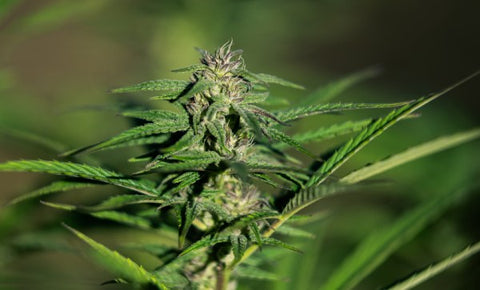
What is dry farming?
Rainfed farming is an agricultural technique that relies exclusively on natural precipitation to provide water to plants. Unlike traditional irrigation, where water is supplied through artificial means such as sprinklers or drip systems, rainfed farming relies on moisture stored in the soil and rainfall. This practice is common in regions where water availability is limited and is considered a sustainable and environmentally friendly farming method.
Compared to cultivation methods that use irrigation, dryland cultivation presents significant differences. While irrigation allows greater control over the amount and timing of water supply, making it ideal for arid areas or for crops with high water demands, dryland farming is totally dependent on climatic conditions. This can mean less frequent watering and a greater challenge in managing soil and plants to conserve available moisture.
In the context of cannabis, dryland cultivation offers several advantages and challenges. Among the advantages is the promotion of a deeper root system in plants, as they seek water in the lower layers of the soil, which can potentially lead to a more robust and resistant development. Furthermore, this method can contribute to a more complex profile of cannabinoids and terpenes, since water stress can influence the production of these substances.
However, the challenges are significant. The main one is the dependence on the climate; In drought years, yield can be seriously affected. Additionally, dryland farming requires careful soil management to maximize water retention and prevent erosion. It is essential to choose cannabis varieties suitable for this type of cultivation and adapt agricultural practices to local conditions.
Rainfed farming involves growing crops without artificial irrigation, depending on rainfall and natural humidity. For use in cannabis, choose drought-resistant varieties and manage the soil to maximize yields and harvest quality.
Environmental Characteristics for Rainfed Farming
The success of dryland farming depends largely on specific environmental conditions, especially climate and soil. These factors are crucial in determining whether a region is suitable for this practice, especially when it comes to a crop as particular as cannabis.
Necessary Climatic Conditions
- Precipitation : The amount and distribution of rainfall is essential. Sufficient precipitation is needed during the growing season to support plants. Rainfall should be frequent and abundant enough to maintain soil moisture but not so excessive that it causes flooding or erosion.
- Temperature : A climate that provides moderate to warm temperatures is ideal. Cannabis needs a warm environment for optimal growth, especially during flowering and maturation.
- Humidity and Evaporation : A balance between humidity and evaporation rate is crucial. Too much evaporation can dry out the soil quickly, while too little moisture can affect plant development.
Necessary Soil Conditions
- Water Retention : Soils with good water retention capacity are essential for dryland cultivation. This allows moisture to remain available to plants during periods without rain.
- Drainage : Good drainage is equally important to avoid soil saturation and root diseases.
- Fertility : Nutrient-rich soils will help sustain cannabis growth throughout its life cycle.
Impact on Cannabis Cultivation
- Dry cultivation can influence the morphology and physiology of cannabis. Plants can develop deeper, more robust root systems to access deeper water reserves.
- Limiting water can stress plants, sometimes resulting in a higher concentration of cannabinoids and terpenes, although it can also reduce overall performance.
Cannabis seeds for dryland cultivation
The success of growing cannabis in dryland conditions largely depends on the selection of suitable varieties that are able to tolerate and thrive under drought and water stress conditions. Desirable characteristics in cannabis strains for dryland cultivation are outlined here, along with some helpful tips for choosing the right genetics:
- Drought Resistance : A fundamental characteristic of cannabis varieties for dryland cultivation is their ability to resist prolonged periods of drought. Drought-tolerant plants can maintain healthy growth and satisfactory flower production even under water-scarce conditions.
- Stress Tolerance : Cannabis varieties selected for dryland cultivation must be able to tolerate and adapt to adverse conditions, such as high temperatures, low humidity levels and infertile soils. The plant's ability to maintain good performance under stressful conditions is crucial to the success of dryland cultivation.
- Short Life Cycle : In areas with pronounced dry seasons, it is advisable to select cannabis varieties with a short life cycle. These varieties have a faster flowering period, allowing them to complete their growing cycle before the dry season hits.
- Plant Size : For dryland cultivation, cannabis varieties that are not too large or require an excessive amount of water for growth are preferred. Compact growing varieties are easier to manage and require fewer water resources to thrive.
- Marijuana Pest and Disease Resistance : Pest and disease resistant cannabis varieties can be especially beneficial in dryland conditions, where plants may be more stressed and susceptible to infestations. It is recommended to choose varieties that are known for their natural resistance to common diseases and pests.
Some cannabis varieties known for their drought resistance and adaptability to adverse conditions include:
- Northern Lights : This indica variety is known for its robustness and resistance to variable climatic conditions, making it ideal for dryland cultivation.
- Durban Poison : Native to Africa, Durban Poison is a hardy sativa strain that can withstand hot, dry conditions.
- Blue Dream : This hybrid variety is known for its vigor and its ability to adapt to a variety of climatic conditions, making it suitable for dryland cultivation in areas with hot summers.
When selecting cannabis strains for dryland cultivation, it is important to do your research and choose genetics that are best suited to local climatic conditions and the specific needs of the crop. Additionally, it is advisable to try different varieties and growing techniques to find the optimal combination that produces the best results in dryland conditions.
Suitable Regions: dry farming areas in Spain
Spain, with its climatic and geographical diversity, offers several potential areas for dryland cultivation, including cannabis cultivation. Each region has unique characteristics that can influence the viability and success of this agricultural practice.
The Northwest of Spain (Galicia and Asturias)
- Characteristics : This region is characterized by its humid and temperate climate, with rainfall well distributed throughout the year. The soils are generally fertile and have good water retention capacity.
- Viability for Cannabis : Although excess humidity can be a challenge, the constant availability of water makes this area viable for dryland cannabis cultivation, especially with varieties that adapt well to wetter conditions.
The Central Plateau (Castilla y León, Castilla-La Mancha)
- Characteristics : This area has a more continental climate with dry, hot summers and cold winters. Precipitation is less frequent but is usually sufficient for a dry crop.
- Viability for Cannabis : The climate of the Central Plateau can be ideal for cannabis, as long as the right time for planting is selected and agricultural practices are used that maximize water retention and minimize evaporation.
Southern Spain (Andalusia)
- Characteristics : Andalusia is known for its hot and arid climate, with long, dry summers. Rainfall is scarce, especially in the east of the region.
- Viability for Cannabis : Although dryland cultivation in this area is more challenging due to the lack of regular rainfall, selecting drought-tolerant cannabis varieties and utilizing water conservation techniques can make it viable in certain areas.
Levante (Valencia, Murcia)
- Characteristics : This area enjoys a Mediterranean climate with mild winters and hot, dry summers. The rains are irregular and concentrated at certain times of the year.
- Viability for Cannabis : Rainfed cultivation can be viable, especially if seasonal rains are taken advantage of for planting and initial plant growth.
Northern Spain (Basque Country, Navarra)
- Characteristics : These areas have a cooler and more humid climate, with regular rainfall throughout the year.
- Feasibility for Cannabis : Rainfed cultivation is feasible, thanks to the regular rainfall and generally fertile soils of the region.
Tools for Dryland Cannabis Cultivation
Growing cannabis in dryland conditions requires some specific tools to ensure the success and efficiency of the process. Here are some essential tools:
- Watering can or drip irrigation system : To provide controlled and precise water to plants, especially during periods of drought.
- Measuring instruments : A soil moisture meter allows you to monitor soil moisture to determine when it is necessary to water the plants, avoiding excess or insufficient watering. Instruments to measure pH and EC will also be necessary.
- Shovel or hoe : To prepare the soil and perform maintenance tasks, such as removing weeds and leveling the ground.
- Pruning Shears : Used to trim dead leaves and branches, as well as harvesting mature buds during the harvest season.
- Drying trays or meshes : To dry cannabis buds after harvest, providing adequate, well-ventilated space for drying.
- Airtight glass jars : For curing and storing the buds once they are dry, maintaining their freshness and potency in the long term.
- Mulch : Organic or inorganic material applied to the soil surface to conserve moisture, suppress weeds, and maintain a more stable soil temperature.
- Protective tools : Gardening gloves, sun protection glasses and appropriate clothing to protect yourself from the sun, heat and possible irritants during cultivation tasks.
- Pest control tools : Such as insect traps, essential oils, or organic pesticides to control common pests and protect cannabis plants from potential damage.
These tools are essential for successfully growing cannabis in dryland conditions, providing the necessary means to monitor, maintain and protect your plants throughout their growth cycle. It is important to invest in quality tools and keep them in good condition to ensure their effectiveness and durability over time.
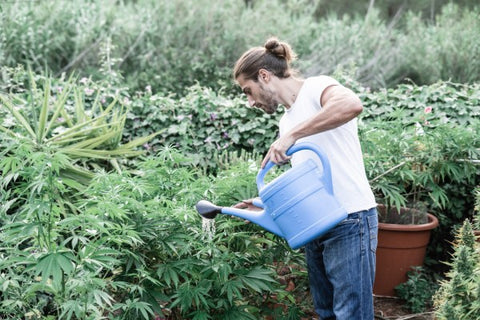
Step-by-step guide to dryland cannabis cultivation
In this step-by-step guide, we will explore how to carry out this type of cultivation, from selecting drought-resistant varieties to water conservation techniques and managing plants under water stress conditions.
Step 1: Selection of the growing location
The first crucial step in growing cannabis in dryland conditions is the careful selection of the location where the cultivation will take place. This is where the foundation will be laid for the future success of your plants. When choosing your growing location, you should consider several important factors:
- Sun exposure : Find a location that receives an adequate amount of direct sunlight, ideally at least six hours a day. Sunlight is essential for healthy plant growth and the production of high-quality flowers.
- Protection from strong winds : Strong winds can damage cannabis plants and increase water evaporation from the soil. Find a location that is protected from high winds, either naturally by trees or other structures, or by installing fencing or screens.
- Soil drainage : It is essential that the soil has good drainage to prevent water accumulation around the roots of the plants. Avoid areas prone to flooding or ponding, and look for well-drained soil that allows water to drain easily.
- Access to water : Even if we are considering dryland cultivation, it is useful to have access to nearby water sources for emergency situations or for the initial stage of plant establishment. This can be important in the event of prolonged drought or unexpected weather conditions.
- Security and privacy : Consider the security and privacy of the growing location to protect your plants from possible theft or unwanted intruders. Choose a location that is relatively secluded and out of reach of prying eyes.
By taking these factors into account when selecting your growing location, you will be creating an environment conducive to the healthy growth of your cannabis plants in dryland conditions. This initial step is essential for the future success of your crop and to maximize the performance of your plants.
Step 2: Soil Preparation
Once you have selected the right location for growing cannabis in dryland conditions, the next step is to optimally prepare the soil to provide an environment conducive to healthy plant growth. Here are the steps to follow:
- Weed and Debris Removal : Before beginning any soil preparation, it is important to remove all weeds and debris from the growing area. Weeds can compete for available nutrients and water in the soil, so it is essential to clear the area completely.
- Tilling or turning the soil : Use a shovel or a tiller to till or turn the soil to a depth of at least 20-30 centimeters. This will help break up soil compaction, improve aeration, and facilitate root growth.
- Soil improvement : At this stage, you can incorporate organic amendments to the soil to improve its structure and fertility. This can include compost, well-rotted manure, peat moss , vermicompost, or any other nutrient-rich organic matter. Mix the amendments thoroughly into the tilled soil.
- pH Adjustment : Perform a soil pH test to determine its current level. Cannabis prefers a slightly acidic soil pH, in the range of 6.0 to 7.0. If the soil pH is too low (acidic) or too high (basic), you can adjust it by adding agricultural lime to increase the pH or elemental sulfur to lower it.
- Leveling Soil : After adding amendments and adjusting pH, level the soil to create an even, flat surface. This will make it easier to water and manage the plants during cultivation.
- Resting the Soil : Let the soil rest for at least a week before planting. During this time, the organic amendments will better integrate into the soil and conditions will stabilize before planting.
By following these steps for soil preparation, you will be creating a favorable environment for the healthy growth of cannabis plants in dryland conditions. Well-prepared soil will provide plant roots with adequate nutrients and space to thrive and produce abundant harvests.
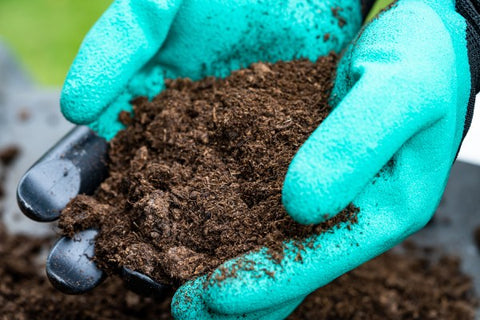
Step 3: Choosing Drought Resistant Varieties
When selecting cannabis varieties for growing in dryland conditions, it is crucial to opt for those that are known for their drought resistance and adaptability. Some recommended varieties are Northern Lights, Durban Poison or Blue Dream seeds. These varieties offer desirable qualities for dryland cultivation and can help maximize crop success under water-stressed conditions.
Step 4: Sowing Seeds or Transplanting Seedlings
Once drought-resistant varieties have been selected, the next step is sowing seeds or transplanting seedlings to the growing site. Here are the steps to follow:
- Soil Preparation : Make sure the soil is well prepared according to the recommendations in Step 2. Remove any weeds and debris, and level the soil if necessary.
- Sowing Seeds : If you sow seeds directly into the soil, do so to a depth of approximately 1 to 2 centimeters. Place the seeds at a suitable distance from each other to allow good growth and development of the plants.
- Transplanting Seedlings : If you choose to transplant seedlings, make sure they are mature and healthy enough for transplanting. Make a hole in the soil that is large enough to accommodate the roots of the seedling without bending them. Place the seedling in the hole and fill it with soil, making sure the seedling is well established and that there are no air pockets around the roots.
- Plant Protection : Consider protecting newly planted or transplanted seedlings from direct sun and strong winds for the first few days to avoid excessive stress.
By following these steps for sowing seeds or transplanting seedlings, you will be laying the foundation for successful growing in dryland conditions. It is important to regularly monitor the growth and development of plants and provide them with proper care as necessary to ensure their health and vigor.
Step 5: Initial Watering and Establishment
After sowing seeds or transplanting seedlings into the growing location, it is crucial to provide adequate initial watering to help the plants establish themselves in their new environment. Here are the steps to follow:
- Initial Watering : After planting or transplanting, gently water the soil to ensure it is adequately moistened around the plant roots. Avoid overwatering, as it can cause waterlogging of the soil and root rot problems.
- Watering frequency : During the first days or weeks after planting or transplanting, it is important to keep the soil slightly moist but not saturated. The frequency of irrigation will depend on factors such as climate, temperature and the water retention capacity of the soil.
- Soil monitoring : Regularly monitor soil moisture to ensure plants receive the proper amount of water. This can be done by inserting a finger into the soil to check the moisture or using a soil moisture meter.
- Root Establishment : During this stage, plants are developing their root systems and establishing their structure in the soil. Providing careful and adequate watering will help promote good root development and strengthen plants for future periods of drought.
- Protection against stress : Avoid exposing newly transplanted plants to extreme heat or dry conditions. Consider providing partial shade during the hottest parts of the day and protecting plants from strong winds to minimize stress and promote successful establishment.
By following these steps for initial watering and plant establishment, you will be creating optimal conditions for healthy growth in dryland conditions. It is important to continue to monitor and adjust your irrigation practices as necessary to ensure the long-term success of your crop.
Step 6: Gradual Irrigation Reduction
Once plants have established themselves in the growing location and have developed a strong root system, it is important to begin gradually reducing the frequency and amount of watering to encourage greater drought resistance and promote healthier growth. Here are the steps to follow to make this transition effectively:
- Soil Moisture Monitoring : Start by regularly monitoring soil moisture to determine when watering is necessary. This can be done by using a soil moisture meter or by simply inserting a finger into the soil to assess its moisture level.
- Longer watering intervals : As plants mature, gradually space out the intervals between watering. This will allow plant roots to actively seek water deeper in the soil, promoting deeper, drought-resistant growth.
- Deep and less frequent watering : Instead of watering frequently in small amounts, opt for deeper and less frequent watering. This will encourage the roots to grow deeper in search of water, making them more resistant to drought in the long term.
- Adjust for climate : Adjust your watering practices based on local weather conditions and the specific needs of your plants. During periods of cooler or wetter weather, you may need to water less frequently, while during periods of warmer, drier weather, you may need to slightly increase watering frequency.
- Plant observation : Closely observe the condition of your plants for signs of water stress, such as wilted or yellowed leaves. If you notice these signs, it may be necessary to adjust your watering schedule to meet the plants' needs.
By gradually reducing watering and encouraging deeper, drought-resistant growth in your cannabis plants, you will be promoting the long-term health and adaptability of your crops to dryland conditions. It is important to remember that each plant and each environment is unique, so it is essential to adjust your watering practices as necessary to meet your plants' individual needs.
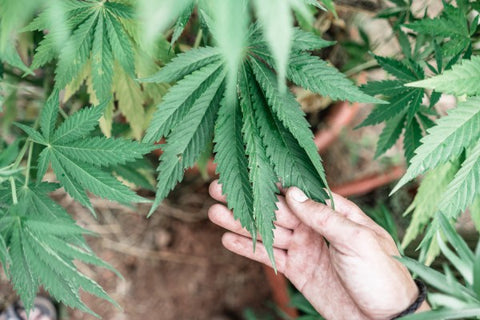
Step 7: Crop Maintenance
Once the crop is established in dryland conditions and irrigation practices are established, it is important to maintain regular monitoring to ensure healthy plant growth. The actions necessary for the continuous maintenance of the crop are described here:
- Weed control : Keep the growing area free of weeds that compete for nutrients and water. Perform periodic weeding to remove any unwanted vegetation.
- Monitoring Marijuana Pests and Diseases : Regularly inspect plants for signs of pests or diseases. If problems are detected, take quick action to control the situation and prevent its spread.
- Proper nutrition : Make sure plants receive the nutrients necessary for healthy growth. You can use organic or mineral fertilizers as needed, but avoid overfeeding which can cause nutritional imbalances.
- Pruning and training : Perform regular pruning to promote proper plant structure and improve air circulation and light penetration. Additionally, consider training techniques such as topping or scrog technique to increase yield and bud quality.
- Protection against extreme conditions : Protect plants from adverse weather conditions such as strong winds, frost or extreme temperatures. Consider using protective structures or temporary covers to minimize stress on plants.
- Adequate Watering : Continue to monitor and adjust watering as necessary to meet the plants' needs throughout their growth cycle. Pay attention to signs of water stress and adjust irrigation accordingly.
- Timely harvest : Harvest at the right time depending on the type of variety and personal preferences. Follow bud ripening guidelines and make sure you harvest at the optimal time to obtain the best quality and potency.
By maintaining a regular maintenance schedule and addressing the individual needs of your plants, you will be promoting healthy growth and maximizing the yield of your cannabis crop in dryland conditions. Remember to be diligent and alert to any changes or issues that may arise, and act accordingly to ensure the continued success of your grow.
Step 8: Mulching and Water Conservation
Mulching is an effective practice for conserving soil moisture and reducing evaporation, which is especially important in dryland growing conditions. Here are the steps to implement this technique and conserve water in your crop:
- Mulch selection : Choose a suitable mulching material, such as straw, wood chips, dry leaves or even black plastic. The goal is to cover the soil around the plants to reduce evaporation and maintain moisture.
- Mulch Application : Apply a layer of mulch approximately 5-10 centimeters thick around the plants, making sure to completely cover the soil but leaving space around the stems to avoid direct contact.
- Benefits of Mulching : Mulch helps retain moisture in the soil by reducing evaporation, meaning plants will need less watering. Additionally, mulch also helps control weeds and maintain a more uniform soil temperature.
- Mulch Renewal : As mulch breaks down over time, it is important to periodically renew it to maintain its benefits. Add a new layer of mulch as necessary to maintain proper depth and water conservation effectiveness.
- Monitoring Soil Moisture : Despite mulching, continue to regularly monitor soil moisture to ensure plants are receiving the proper amount of water. Adjust your watering schedule as needed based on weather conditions and the water holding capacity of the soil.
By implementing the mulching technique in your cannabis cultivation in dry conditions, you will be able to conserve soil moisture and reduce the need for irrigation, which will promote healthy and sustainable growth of your plants. Remember to renew the mulch regularly and adjust your watering program according to the specific needs of your plants and environmental conditions.
Step 9: Harvest and drying
Harvesting is the culmination of the cannabis growing process and it is crucial to do it at the optimal time to obtain the best results. Here are the steps to carry out a successful harvest:
- Bud Ripening : Watch your plants carefully to determine when they are ready to harvest. Buds reach their full potential for potency, flavor and effects when they are fully ripe. Look for pistils that have changed color and trichomes that have turned opaque or amber in color.
- Determining Harvest Time : Harvest time may vary depending on variety and individual preferences. Some growers prefer to harvest when most of the trichomes are milky, while others wait until some trichomes turn amber for a more relaxing effect.
- Preparation for harvest : Before harvesting, prepare a clean, well-ventilated space to work. Make sure you have all the necessary tools, such as clean pruning shears and drying trays.
- Cutting the buds : Use clean pruning shears to cut the buds from the plants. Cut each branch individually and leave them on a drying tray for further processing.
- Drying the buds : Place the cut buds on a drying tray in a dark area with good air circulation. Let the buds dry slowly for about 7-10 days, or until the stems can break with a slight crack.
- Curing the buds : Once the buds are dry, transfer them to airtight glass jars for the curing process. Open the jars daily for the first few weeks to allow moisture to escape and the buds to aerate. After several weeks of curing, the buds will be ready for consumption.
- Storage : Once cured, store the buds in airtight glass jars in a cool, dark, dry place to maintain their long-term freshness and potency.
Harvesting is an exciting time in the life cycle of your cannabis plants and requires care and attention for the best results. Follow these steps carefully to harvest and process your buds effectively, ensuring an optimal and satisfying drinking experience.
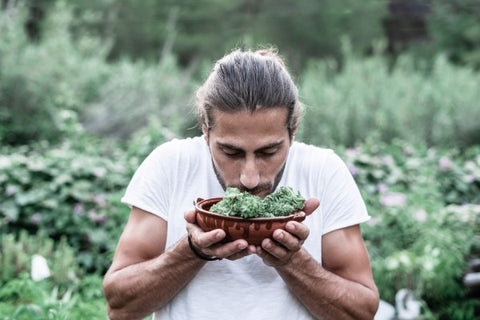
Advantages of Dry Farming: More Profitable
Rainfed cultivation can be a profitable option for cannabis, especially when compared to other growing methods that require intensive irrigation. The aspects that make dryland farming an economically viable option and its comparison with other methods are analyzed below:
- Reducing Irrigation Costs : Rainfed farming eliminates the need for expensive irrigation systems, significantly reducing infrastructure expenses and water consumption.
- Less Reliance on External Inputs : By relying less on fertilizers and chemicals for pest control (due to a more balanced ecosystem), operating costs can decrease.
- Adaptation to Climate Change : With growing concerns about climate change and water scarcity, dryland farming is a sustainable practice that can offer long-term advantages in terms of adaptability and lower environmental impact.
- Increased Product Quality : Controlled water stress in dryland cultivation can often result in cannabis with higher concentrations of cannabinoids and terpenes, which can increase its market value.
- Lower Environmental Impact : The sustainability of dryland farming can be an important selling point, attracting environmentally conscious consumers, which can open markets and premium pricing opportunities.
- Reduction of Labor in Irrigation : By not requiring complex irrigation systems, the need for labor for irrigation maintenance is reduced, which reduces labor costs.
